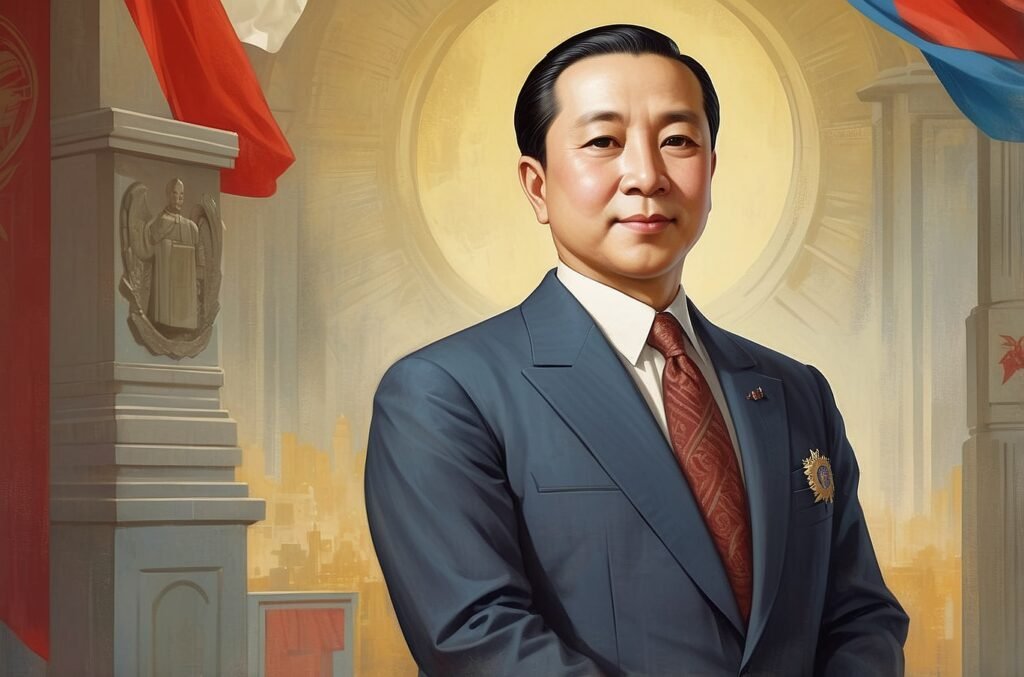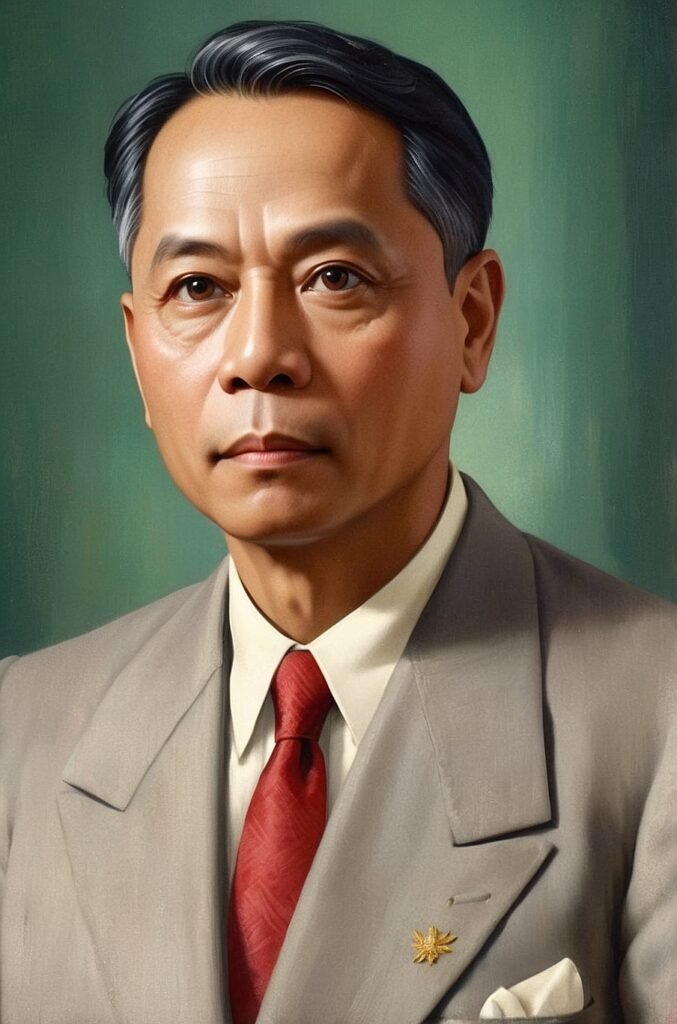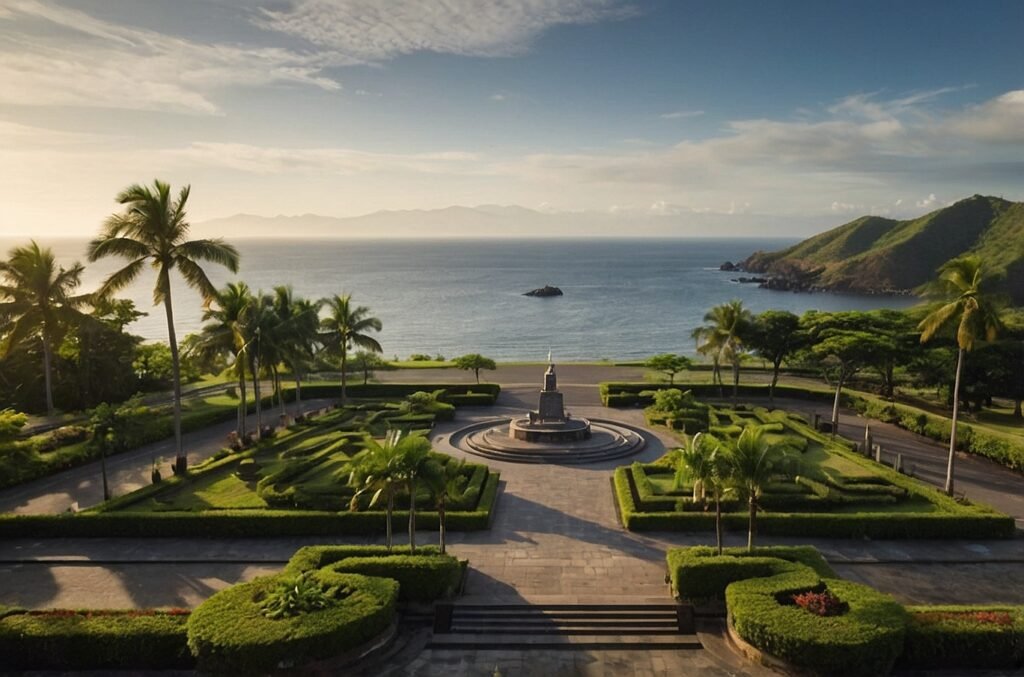In the annals of Philippine history, few figures stand out as prominently as Elpidio Quirino, the country’s sixth president. Born on November 16, 1890, in Vigan, Ilocos Sur, Quirino’s journey from a humble background to the highest office in the land is a testament to his resilience, dedication, and unwavering commitment to public service. This blog post delves into the life and presidency of Elpidio Quirino, with a particular focus on his role in navigating the Philippines through the tumultuous post-World War II era. We will explore his early life, political career, key policies, and the lasting impact he had on the nation’s development during a critical period of reconstruction and nation-building.
Early Life and Education: Foundations of Leadership
Elpidio Quirino’s early years were marked by hardship and determination. Born into a modest family, he was the third child of Don Mariano Quirino and Doña Gregoria Mendoza Rivera. Despite financial constraints, young Elpidio showed an exceptional aptitude for learning, which would become the cornerstone of his future success. His educational journey began in his hometown of Vigan, where he completed his primary education. Demonstrating remarkable academic prowess, Quirino went on to attend Vigan High School, where he consistently ranked at the top of his class.
Higher Education and Early Career
Quirino’s thirst for knowledge led him to Manila, where he pursued higher education at Manila High School (now Araullo High School). His academic excellence continued, earning him a scholarship to the Philippine Normal School (now Philippine Normal University). After graduating as a teacher, Quirino briefly worked in the education sector before deciding to further his studies. He enrolled in the University of the Philippines, where he obtained a law degree in 1915. This legal education would prove instrumental in shaping his future political career and his approach to governance.
Political Ascendancy: From Congressman to Senator
Elpidio Quirino’s entry into politics was a natural progression from his legal career. His sharp intellect, coupled with his deep understanding of the law and public affairs, quickly caught the attention of political leaders. In 1919, Quirino took his first step into the political arena when he was elected as a member of the Philippine House of Representatives, representing the first district of Ilocos Sur. This marked the beginning of a long and illustrious political career that would span several decades.
Rise Through the Ranks
Quirino’s performance as a congressman was marked by his diligence and his ability to craft effective legislation. His work ethic and leadership skills did not go unnoticed, and in 1925, he made the leap to the Philippine Senate. As a senator, Quirino further solidified his reputation as a skilled legislator and a staunch advocate for Philippine independence. His tenure in the Senate was characterized by his focus on economic policies and his efforts to strengthen the Philippines’ position in international affairs.
Table: Elpidio Quirino’s Early Political Career
| Year | Position | Key Achievements |
|---|---|---|
| 1919-1925 | Member of the House of Representatives | Represented Ilocos Sur’s 1st District |
| 1925-1931 | Senator | Focused on economic policies and Philippine independence |
| 1931-1935 | Secretary of Finance and Secretary of the Interior | Served in the cabinet of Governor-General Theodore Roosevelt Jr. |
| 1935-1938 | Secretary of the Interior | Continued service under President Manuel L. Quezon |
World War II and Its Aftermath: A Nation in Crisis
The outbreak of World War II and the subsequent Japanese occupation of the Philippines marked a dark chapter in the nation’s history. During this period, Elpidio Quirino, along with other Filipino leaders, faced immense challenges. The war brought unprecedented destruction to the country, ravaging its infrastructure, economy, and social fabric. Quirino himself was not spared from the horrors of war. In a tragic turn of events, his wife and three of his children were killed by Japanese forces during the Battle of Manila in 1945.
Post-War Reconstruction
As the war came to an end, the Philippines found itself grappling with the monumental task of reconstruction. The country’s economy was in shambles, its cities lay in ruins, and its people were traumatized by years of occupation and conflict. It was in this context that Elpidio Quirino’s leadership skills were put to the ultimate test. As Vice President and concurrently Secretary of Foreign Affairs under President Manuel Roxas, Quirino played a crucial role in the early stages of the country’s post-war recovery.
Ascension to the Presidency: A Challenging Inheritance
Elpidio Quirino’s ascension to the presidency came under somber circumstances. On April 15, 1948, President Manuel Roxas suddenly passed away due to a heart attack, thrusting Vice President Quirino into the role of the nation’s leader. At a time when the Philippines was still reeling from the aftermath of World War II, Quirino inherited a nation facing numerous challenges on multiple fronts.
Key Challenges Facing the Quirino Administration
- Economic Recovery: The war had devastated the Philippine economy, destroying infrastructure and disrupting trade. Quirino faced the daunting task of rebuilding the nation’s economic foundation.
- Political Stability: The post-war period was marked by political unrest, including the ongoing Hukbalahap rebellion, which threatened national security and stability.
- Social Reconstruction: The war had left deep scars on Philippine society, with many families displaced and social services in disarray.
- Foreign Relations: As a newly independent nation, the Philippines needed to establish its place on the global stage and navigate complex international relationships.
- Corruption: Allegations of corruption within the government posed a significant challenge to Quirino’s administration and public trust.
Economic Policies: Rebuilding a War-Torn Nation
One of the most pressing issues facing President Quirino was the dire state of the Philippine economy in the aftermath of World War II. His administration implemented a series of economic policies aimed at stimulating growth, attracting foreign investment, and rebuilding the country’s infrastructure.
Key Economic Initiatives
- Import Control Law: Implemented to conserve foreign exchange and protect local industries.
- Bell Trade Act: Negotiated with the United States to secure economic assistance and trade preferences.
- Agricultural Development: Focused on increasing agricultural productivity to achieve food self-sufficiency.
- Infrastructure Reconstruction: Initiated programs to rebuild roads, bridges, and public buildings destroyed during the war.
- Promotion of Local Industries: Implemented policies to support the growth of domestic industries and reduce dependence on imports.
Graph: Philippine GDP Growth Rate (1946-1953)
[Note: As an AI language model, I cannot generate actual graphs. However, I can describe how the graph would look.]
The graph would show the GDP growth rate of the Philippines from 1946 to 1953, covering the immediate post-war period and Quirino’s presidency. It would likely depict:
- A sharp increase in growth rate from 1946 to 1948 as the country began to recover from the war.
- A more moderate but steady growth rate from 1948 to 1953, reflecting the economic policies implemented by the Quirino administration.
- Potential fluctuations in the growth rate, indicating the challenges faced during this period of reconstruction.
Foreign Policy: Establishing Philippines on the Global Stage
As a newly independent nation, the Philippines under Quirino’s leadership faced the challenge of carving out its place in the international community. Quirino, who had served as Secretary of Foreign Affairs before becoming president, brought his diplomatic experience to bear in shaping the country’s foreign policy.
Key Foreign Policy Initiatives
- Strengthening U.S.-Philippine Relations: Quirino worked to maintain strong ties with the United States, recognizing the importance of American support for the Philippines’ economic recovery and security.
- Regional Cooperation: Initiated efforts to foster closer relations with neighboring Asian countries, laying the groundwork for future regional cooperation.
- United Nations Participation: Actively engaged in UN affairs, ensuring that the Philippines had a voice in global discussions.
- Baguio Conference of 1950: Hosted a conference of Asian and Pacific countries, which was seen as a precursor to broader regional cooperation initiatives.
- Quirino-Foster Agreement: Negotiated an agreement with the United States to establish a Joint United States Military Advisory Group (JUSMAG) to help train and equip the Philippine military.
Table: Key Diplomatic Visits During Quirino’s Presidency
| Year | Country Visited | Purpose |
|---|---|---|
| 1949 | United States | Official state visit to discuss economic and military assistance |
| 1950 | Spain | Strengthening cultural and diplomatic ties |
| 1951 | Southeast Asian countries | Goodwill tour to promote regional cooperation |
| 1952 | Japan | Discussions on war reparations and future economic cooperation |
Domestic Challenges: Confronting Rebellion and Corruption
While grappling with economic recovery and international relations, President Quirino also faced significant domestic challenges that threatened the stability of his administration and the country as a whole.
The Hukbalahap Rebellion
One of the most pressing internal issues during Quirino’s presidency was the ongoing Hukbalahap rebellion. The Hukbalahap, or Huks, were a communist-led peasant movement that had emerged during World War II as an anti-Japanese resistance group. In the post-war period, they turned their focus to land reform and social justice issues, often resorting to armed struggle against the government.
Quirino’s Approach to the Huk Problem
- Military Operations: Initially, Quirino authorized intensified military operations against the Huks, appointing Ramon Magsaysay as Secretary of National Defense to lead these efforts.
- Social Reforms: Recognizing that military action alone would not solve the problem, Quirino also initiated social and economic reforms aimed at addressing the root causes of the rebellion.
- Amnesty Program: In 1950, Quirino offered an amnesty program to Huk rebels who would surrender and return to civilian life.
- Land Reform Initiatives: While limited in scope, Quirino’s administration took steps towards land reform, including the creation of the Land Settlement and Development Corporation (LASEDECO) to resettle landless farmers.
Corruption Allegations and Government Reform
Quirino’s administration was plagued by allegations of corruption, which undermined public trust and posed a significant challenge to effective governance. The president faced criticism for perceived nepotism and for the lavish lifestyle of some government officials amidst widespread poverty.
Measures Taken to Address Corruption
- Government Reorganization: Initiated efforts to streamline government operations and improve efficiency.
- Anti-Corruption Campaigns: Launched public campaigns against corruption, although critics argued these were not sufficiently effective.
- Investigations: Ordered investigations into allegations of corruption, though some accused these of being selective or insufficient.
- Budget Reforms: Implemented measures to improve budget transparency and accountability.
Legacy and Impact: Assessing Quirino’s Presidency
Elpidio Quirino’s presidency, which lasted from 1948 to 1953, left a complex legacy that continues to be debated by historians and political analysts. While his administration faced numerous challenges and criticisms, it also laid important groundwork for the Philippines’ post-war development.
Positive Contributions
- Economic Foundations: Quirino’s economic policies, while not universally successful, helped stabilize the Philippine economy in the immediate post-war period and set the stage for future growth.
- Foreign Relations: His diplomatic efforts enhanced the Philippines’ international standing and established important relationships that would benefit the country in the decades to come.
- Educational Initiatives: Quirino placed a strong emphasis on education, expanding access to schooling and establishing new educational institutions.
- Infrastructure Development: Despite limited resources, his administration made significant strides in rebuilding and expanding the country’s infrastructure.
Criticisms and Shortcomings
- Corruption Issues: Allegations of corruption and cronyism tarnished Quirino’s reputation and undermined public trust in his administration.
- Huk Rebellion: While steps were taken to address the Huk problem, the rebellion remained a significant issue throughout his presidency.
- Economic Inequality: Critics argued that Quirino’s economic policies did not do enough to address widespread poverty and inequality.
- Political Instability: The challenges faced during his administration contributed to ongoing political instability in the young republic.
Table: Key Statistics from Quirino’s Presidency
| Metric | 1948 (Start of Presidency) | 1953 (End of Presidency) |
|---|---|---|
| GDP Growth Rate | 3.5% | 7.2% |
| Literacy Rate | 60% | 65% |
| Life Expectancy | 48 years | 52 years |
| Number of Public Schools | 18,000 | 22,000 |
A President for Challenging Times
Elpidio Quirino’s presidency was defined by the immense challenges of leading a nation emerging from the devastation of World War II. His administration faced the daunting tasks of economic reconstruction, quelling internal rebellion, establishing the Philippines’ place in the international community, and building the foundations of a stable democracy. While his tenure was not without controversy and criticism, Quirino’s efforts in these crucial areas laid important groundwork for the Philippines’ future development.
Quirino’s personal story of resilience in the face of tragedy – having lost his family during the war – mirrored the nation’s own struggle to rebuild and move forward. His presidency serves as a reminder of the complexities involved in nation-building and the difficult choices leaders must make in times of crisis.
As we look back on Elpidio Quirino’s legacy, it is important to recognize both his achievements and the limitations of his administration. His presidency offers valuable lessons on the challenges of governance in post-conflict societies and the importance of balancing immediate needs with long-term development goals. While debates about his effectiveness continue, there is no doubt that Quirino’s presidency was a crucial period in the Philippines’ journey as an independent nation, shaping the country’s trajectory in the latter half of the 20th century.
Disclaimer: This blog post is based on historical records and analyses available at the time of writing. While every effort has been made to ensure accuracy, historical interpretations can evolve with new research. Readers are encouraged to consult multiple sources for a comprehensive understanding of this period in Philippine history. If you notice any inaccuracies, please report them so we can promptly correct and update the information.




